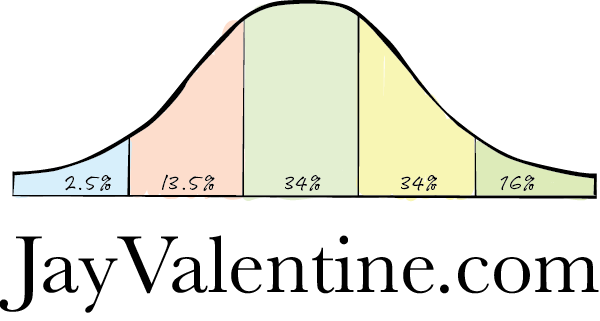
SaaS companies waste most of their marketing resources!
Companies focus on what their VPs know, not what prospects need.
Does getting to the right buyer, with a value prop, when they are ready to buy, consume 5 percent or 95 percent of a SaaS firm’s sales and marketing resources? This question is not nearly as simple as it seems.
Today B2B buyers do not want to talk to salespeople. Firms employ AI-based technology to stop the SPAM that Account Based Marketing programs generate. Buyers hide cell numbers and almost never answer an office phone.
When at trade shows, buyers give out business cards without company direct emails or phones.
The singular problem for today’s B2B sales rep is getting to the right person by overcoming more buyer-created obstacles than at any time in history.
How does one NOT get the decision maker’s attention? How does someone create a selling persona entirely repellent to the potential buyer?
You guessed it! You are a smarty!
The way to make sure nobody takes your call is to be seen as someone with nothing of value; be a time waster.
Ninety-five percent of the sales and marketing expense from SaaS firms today is spent on techniques that just waste the prospect’s time.
Firms demonstrate this by sending countless emails to the person they want to meet. Reps ping them on LinkedIn. Look, the buyer supports a charity so have the rep act like they support it too!
When prospect email systems block SPAM, cold call, incessantly about how to save them money, make them successful or of course, deliver digital transformation.
Transaction sales managers count the number of calls while the marketing department is creating a sales funnel with scores of prospects annoyed by these selling tactics.
Perhaps one should call it the annoyance funnel.
The typical SaaS company spends 95 percent of its sales and marketing resources delivering touch points buyers clearly hate.
These include SPAM (personalized with Account Based Marketing), cold calling, crappy, self-indulgent “whitepapers,” cheap Chinese logo-wear, leaky pens, press releases beginning with “…the leading global brand for” whatever.
If the poor buyer makes the mistake of downloading the white paper, which is usually junk collateral, a chirpy kid calls before the download is complete. Lesson learned: do not give out that real phone number when downloading the marketing junk.
Universal lesson learned: today all “whitepapers” are worthless marketing brochures.
This is the present world of SaaS sales and marketing.
SaaS firms spend 95 percent of their sales and marketing resources irritating prospects, positioning their sales rep as a low-level pest, not a trusted source for advice about a complex product.
SaaS companies cannot help it. They are captives of the transaction sales mentality of the current crop of Sales VPs and marketing types. These sales managers simply do not know another way to find a prospect. Thus, 65 percent of all sales reps today fail to meet quota.
Buyers have internal buying clocks. They know what they want, perform research on the Web, talk to others about solutions; they do not want salespeople involved.
Buyers leave tracks when they are getting into these cycles. Those tracks are visible to those close to them – the trusted advisor network.
The trusted advisor network includes those with whom the buyer has done business for years. These friends, colleagues, consultants know what the buyer needs, and they too may be seeking a solution.
People do not buy from those they like; they buy from those they trust.
They do not trust SaaS sales reps, most of whom are the age of their middle child.
Smart SaaS firms bypass Account Based Marketing. They skip armies of “business development reps” and they focus on a small number of highly trained sophisticated sales reps who can identify, then work trusted advisor networks to win large, complex sales.
Smart SaaS companies allocate their resources to the 5 percent “last mile” in the sales cycle. They are in front of the prospect when she is ready to buy.
Buyers love it. Costs of sales drop from over 50 percent to less than 10 percent. Sales reps do not hate their jobs.
The good news is almost nobody is doing it because it cannot be measured by VC-dominated boards. It is the differentiated way to sell.
After all, selling to the customer the way they want to buy sounds like a pretty good idea.
Reprinted from Software Executive Magazine OnLine
